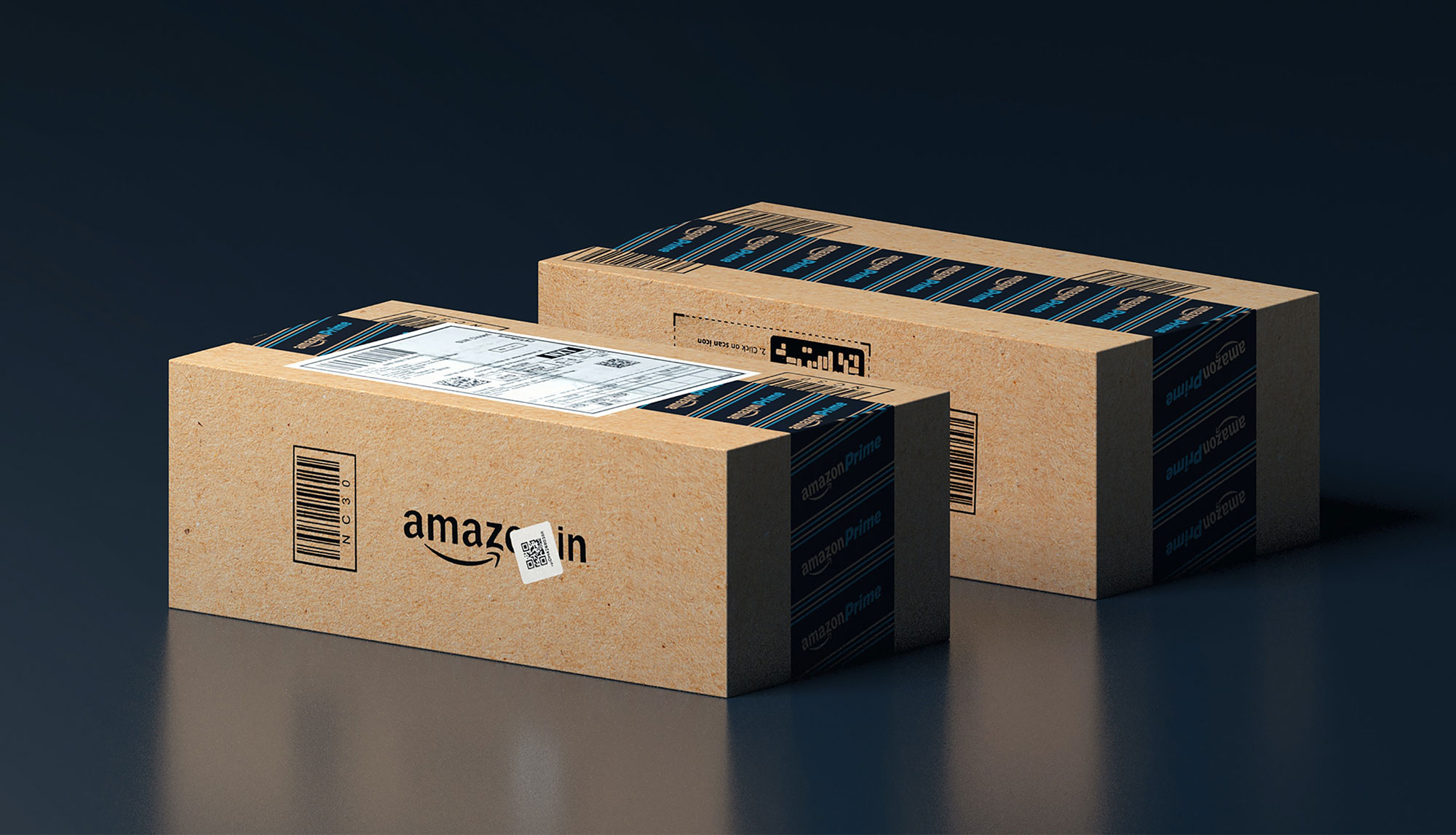How to Set Up EDI with Amazon Vendor Central
Amazon Vendor Central: An Overview
Amazon Vendor Central is an exclusive platform that offers manufacturers, distributors, and suppliers a highly sought-after opportunity to sell their products to Amazon directly in a wholesale relationship. This invitation-only program can significantly boost conversions and scale businesses rapidly. However, achieving success in Amazon Vendor Central requires overcoming integration challenges and meeting Amazon's stringent vendor criteria for EDI or API integration. In this comprehensive guide, we will delve into the crucial aspects of Amazon Vendor Central, the benefits of integration, and how to navigate the EDI process successfully.
Understanding Amazon Vendor Central
The Coveted Opportunity: Invitation to Amazon Vendor Central
Amazon Vendor Central serves as a crossroads for businesses seeking to expand their market presence. Once accepted into the Amazon Vendor program, sellers' products are purchased by Amazon and listed on the platform, and the products will say "ships from and sold by Amazon".

This means products are of course on Prime, but all returns are typically handled by Amazon. One hesitation some vendors have with joining the Vendor Central programme is that Amazon can set the retail prices for products, as they are the distributor. By using supply chain control and exclusive listings, as well as strategy, vendors can control which products go to Amazon and maintain some control over the sell price to Amazon. Ultimately, if Amazon is undermining pricing in a way that could damage the Vendor, it may be best to discontinue that product to Amazon Vendor.
Eliminating Direct Customer Interaction: Benefits of Amazon Vendor Central
By utilising Amazon Vendor Central, vendors can avoid direct customer interactions, saving them from the hassles of shipping Direct to customer. There are no FBA fees, either, as Amazon owns the product. As certified Amazon vendors, they can rely on Amazon to handle inventory, pricing, shipping, customer service, and returns, allowing them to focus on revenue generation.

However, Vendors must continue to manage and maintain their listings, and just putting products online with the vendor programme will not be enough to succeed and thrive on Vendor Central.
If you are interested in support with Listings and management, please check out our partners page.
Vendor Central Direct Fulfillment: A Cost-Saving Option
Amazon also offers the Vendor Central Direct Fulfilment option, allowing vendors to sell items as Amazon does, while shipping directly to customers. This arrangement can lead to cost savings and increased profitability for sellers. This is most typically recommended for bulkier products, such as medium-large domestic appliances like fridges, or sofas, saunas, garden equipment etc. While this can lead to slower lead times to customers, it reduces the likelihood of loss in an Amazon centre, and prevents double shipping and storing a large item. Amazon FCs are typically quite full, so small and light products are most suited to the Retail/ Purchase Order model.
Understanding Electronic Data Interchange (EDI)
EDI as a Crucial Integration Tool
Amazon Vendor has been leveraging Electronic Data Interchange (EDI) for a long time to facilitate the exchange of vital information related to purchase orders, shipments, and invoices. EDI integration is vital for seamless communication and order processing between vendors and Amazon.
Introducing the Vendor API
In Q2 2020, Amazon Vendor introduced a new vendor API, which complements EDI for Direct Fulfilment Vendors. Both systems offer similar benefits and functionality, providing sellers with alternative integration options.
See our article, Amazon Vendor EDI vs API - what's the difference? for more.
Exploring the Advantages of Integration
Streamlining Workflows and Minimising Manual Labor

EDI integration streamlines order processing, reducing the time and effort required for manual tasks. This leads to improved efficiency and reduced operational costs for vendors. If you are struggling with manual work or finding that there is a lot of time being spent on repetitive process, EDI integration will really help to accelerate your processes.
Enhancing Accuracy and Reducing Errors
Automating data exchange through EDI minimizes the risk of human errors, ensuring accurate and timely order fulfillment. This can result in increased customer satisfaction and fewer chargebacks.
For example, it is possible to turn on the "down confirmation of POs" setting via EDI, meaning that a Vendor can accept an order, then reduce it later several times, without incurring the "PO on time Accuracy", sub type "Down Confirmed" chargeback. This only applies if the order was rejected within 5 days of the shipping window starting, regardless of when the order was placed. For example, if an order is placed on August 1st and shipping window is December 4th-10th, any changes to the confirmations after December 8th Midnight will incur charges. (ie from 9th 0000am).
The Basics of Electronic Data Interchange (EDI)
Understanding EDI and its Role in Order Processing
EDI, which stands for Electronic Data Interchange, enables the seamless exchange of data between two servers, primarily concerning purchase orders and invoices. Vendors must set up Amazon EDI integration to establish a smooth connection with their vendor account manager.
Assessing the Benefit of EDI Integration
Before committing to EDI integration, vendors should evaluate their current workflows map out how much time each process takes. Neglecting the impact on warehouse operations and finances could lead to lower profits and hidden costs.
See more - download our free Gantt Chart to help asses the stages of your PO processing.
EDI Integration Limitations
While EDI offers significant benefits, it does have some limitations. For instance, vendors cannot create, upload, or edit catalogs through EDI, and stock status updates are limited to once every 24 hours. It's also not possible to edit listings or add A+ Content, and do product information management, via EDI.
Key EDI Message Types for Amazon Vendors
EDI Messages Commonly Used by Amazon Vendor Central
Amazon vendors typically deploy seven common EDI message types to facilitate communication:
- Purchase Order - EDI 850
- Purchase Order Acknowledgement - EDI 855
- Invoice - EDI 810
- Cost and Inventory Feed (COSTINV) also called Inventory Report INVRPT (IAA)- EDI 96A
- Routing Request (RR) - EDI 753 WePay (Collect) Only
- Routing Instructions (RRI) - EDI 754 WePay (Collect) Only
- Advance Shipping Notice (ASN) - EDI 856
KhooCommerce can readily assist with the creation and reception of these messages to accelerate your workflow. Get in touch with us to learn more!
EDI Documents Not Currently Transmitted to Amazon Vendor
Certain document types cannot be transmitted to Amazon Vendor through EDI. These include product creation, product details (images, features, description), and price change negotiations.
Choosing Between EDI and API Integration
Two Integration Methods:
Amazon offers two ways for vendors to integrate with Amazon Vendor. Vendors can register and integrate their Vendor account either EDI or a newer API.
EDI Integration:
This method is traditional and wider in scope than the API for the retail POs, but the API is slightly favoured for the
API Integration (The Newer Method):
API integration, introduced by Amazon in Q3 2020, requires setting up an API connection. APIs serve as a standard integration system between applications, offering a web-based protocol for connecting different systems.
See our article, Amazon Vendor EDI vs API - what's the difference? for more.
Essential for both:
In either case, the system functionality is the main requirement. It is one thing to connect a system to another, but it is essential that the Vendor will actually be able to streamline their operations beyond just integration. KhooCommerce features extensive PO automation and Shipping Acceleration options to help your teams bulk process, tick, scan, pack, and print all you need to make Amazon Vendor easy to manage.
See more: Integrating your ERP to Amazon Vendor
Efficiently Integrating Amazon EDI with Backend Systems
Understanding the Importance of Integration

Integration between Amazon Vendor Central and backend ERP, eCommerce, and logistics systems is crucial for seamless order processing. Delayed or inaccurate data entry can lead to expensive charges, making integration essential for cost-effectiveness.
Selecting a Suitable Connector
Choosing a reliable connector is vital for automating critical transactions and ensuring accurate data exchange. An effective connector should provide accurate item and catalog information to Amazon via EDI, support credible AS2/EDI interactions, and prevent costly SLA violations.
KhooCommerce handles all the EDI integration and setup for you as part of onboarding. We fully host and monitor all the AS2 connections, as well as provide our own endpoints and certifications. All communication is fully encrypted with industry standards SHA256 and AES128.
See more: Integrating your ERP to Amazon Vendor
Cost and Time Considerations for Amazon Vendor Integration
Budgeting for Integration
The cost of Amazon Vendor integration with EDI depends on the level of integration required. Depending on your provider, they will provide you a scope and timeframe of costs.
Timeline for Integration
The time required for integration varies depending on the system's complexity, information exchange, and organization's capabilities. While integrating with Amazon itself is quick, setting up the interface with an ERP system may take several weeks to a few months.
KhooCommerce offers competitive rates and repaid setup timescales if you already use one of our pre-made connectors to ERP.
See more: Integrating your ERP to Amazon Vendor
Is Self-Integration Feasible?
While vendors may not require a software partner for EDI setup, they need IT expertise to handle EDI messages and integrate them into internal systems. Hiring an IT team can assist in achieving successful self-integration. If you are doing a self-managed integration, we recommend that you:
1) Assess internal process and pain points
2) Check processes exist in ERP and Warehouse systems to deal with the pain points (such as order management, routing, and ASN creation)
3) Check integration parameters and develop the integration
4) Fully test and dry-run the integration with dummy data
5) Roll out and train employees on how the new systems operates
6) Continue to monitor performance and assess how effectively the integration is performing.
Conclusion
Amazon Vendor Central presents a valuable opportunity for vendors to expand their reach and increase sales. By embracing EDI integration, vendors can streamline order processing, enhance accuracy, and access Amazon incentives and rewards. Understanding the EDI process and meeting Amazon's requirements are vital for successful integration. With careful planning and suitable connectors, vendors can integrate Amazon EDI effectively with their backend systems, leading to cost savings and improved efficiency. Proper budgeting and time considerations are essential for a successful integration journey. By following the necessary steps and conducting thorough research, vendors can begin their Amazon Vendor integration and unlock the platform's immense potential.
Would you like to integrate your business with Amazon Vendor? Get in touch below - we offer a free consultation to discuss your needs and understand your business.
